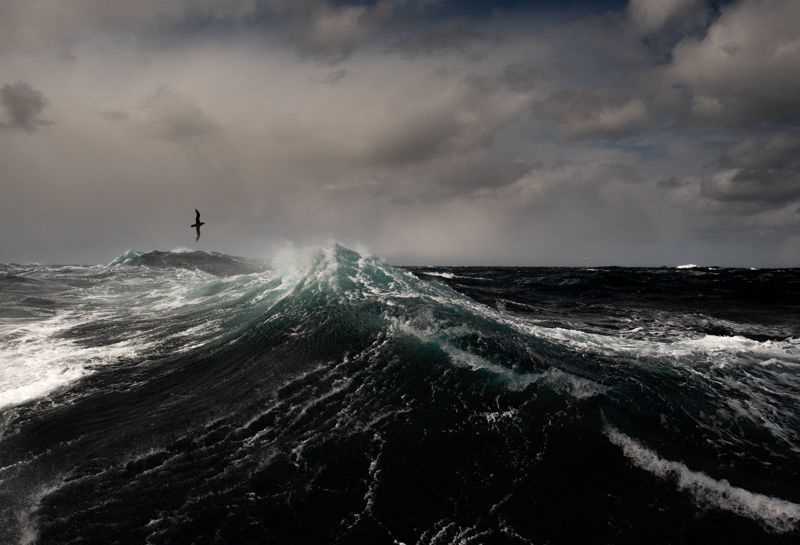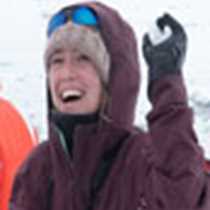Today we awoke to waves, as we charted our course north through the Drake Passage. Huge walls of water stood around us, with sizable swells. Our guests had become hardened seafarers and took the turbulence in stride. A gaggle of us spent the morning in the bridge, “oohing” and “ahhing” at some of the larger waves.
The waves were driven by southwesterly winds, which rushed through the Drake Passage gusting up to 69 knots. These winds weren’t just good for forming waves, they supported a huge abundance of albatross and petrels as we charted our course back across the polar front. We were treated to the most incredible displays as wandering, royal and black-browed albatross all cut their course around the ship, soaring on pillows of air. They swept down low to the surface of the water, before dynamically cutting up rapidly into the blue sky. At many points, the birds were held perfectly vertical from wingtip to wingtip, the force of the wind holding them static in midair – as if suspended by a string.
It was only here in the Southern Ocean that such huge birds as the wandering and royal albatross could have evolved. Only the extreme winds that we experience here can support their incredible weight – which can reach over 11kg in some of the large male birds. With a wingspan of up to 3.5m these two species are the largest flying birds on the planet today. Their imposing size was breathtaking as at least five of the giant birds shared the air around our ship.
Throughout the day we were treated to two fascinating lectures from our naturalist and photo team; Marylou first presented on the subject of climate change and its impact in Antarctica and then after lunch, Eric provided insight into how to properly edit and
The day was rounded off with the Captain’s Farewell Cocktail party; a nice opportunity for us all to reflect on an incredible, once-in-a-lifetime adventure. The voyage itself covered 1763 nautical miles, during which time we plunged, explored, climbed, ate, laughed, and formed amazing friendships.









